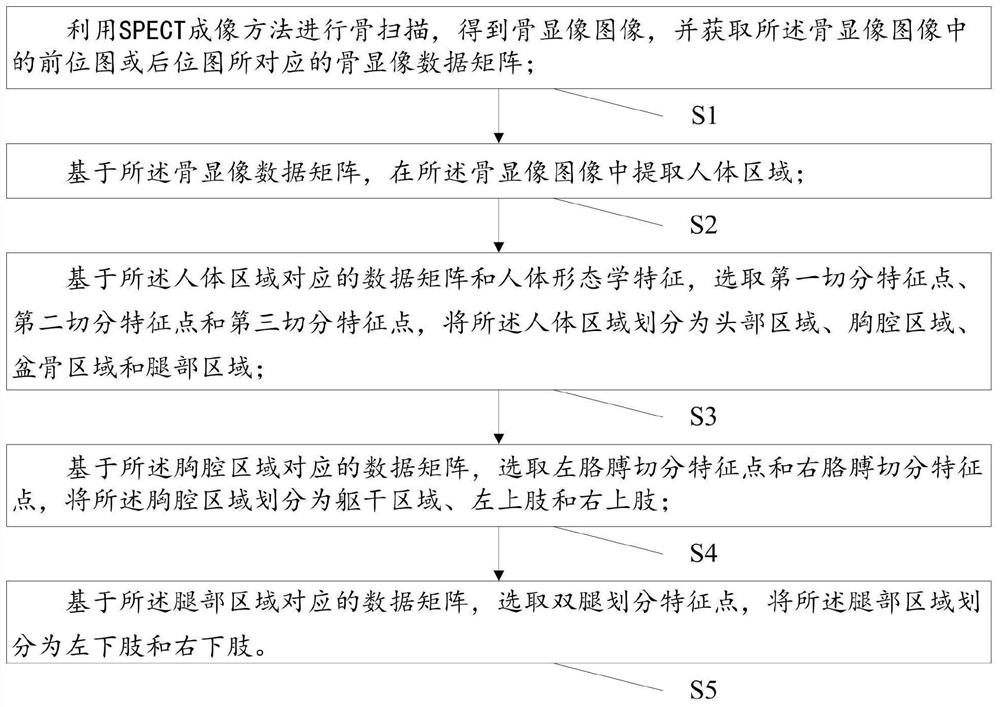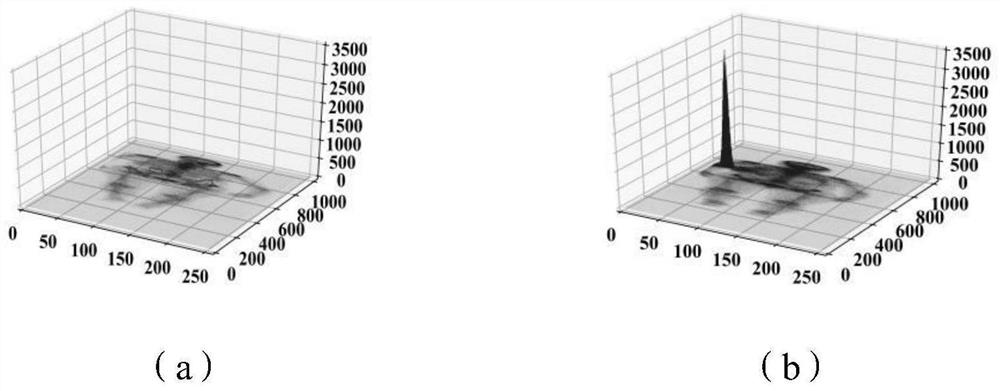Human body part segmentation method and system based on SPECT imaging
A technology of human body parts and imaging, applied in the field of medical imaging, can solve problems such as difficulties, radiation pollution, and low signal-to-noise ratio between bones and backgrounds, and achieve the effects of precise segmentation, improved segmentation accuracy, and reduced calculation amount.
- Summary
- Abstract
- Description
- Claims
- Application Information
AI Technical Summary
Problems solved by technology
Method used
Image
Examples
Embodiment 1
[0042] The existing technology is mainly aimed at human body segmentation of traditional natural images, which not only has high algorithm complexity, but also cannot be directly applied to bone imaging images. In the segmentation of whole-body bone imaging images, an accurate human body segmentation method that can effectively target each whole-body bone imaging image has not yet been found. This embodiment is used to provide a human body part segmentation method based on SPECT imaging, which can be applied to the human body segmentation of each bone imaging image, such as figure 1 As shown, the segmentation method includes the following steps:
[0043] S1: performing a bone scan using the SPECT imaging method to obtain a bone imaging image, and acquiring a bone imaging data matrix corresponding to the anterior or posterior image in the bone imaging image;
[0044] Specifically, S1 includes: capturing the nuclide amount by a nuclide detector, displaying it as a bone imaging ...
Embodiment 2
[0097] This embodiment is used to provide a human body part segmentation system based on SPECT imaging, such as Figure 15 As shown, the segmentation system includes:
[0098] The bone imaging data matrix acquisition module M1 is used to perform bone scanning using the SPECT imaging method to obtain a bone imaging image, and acquire the bone imaging data matrix corresponding to the anterior bitmap or the posterior bitmap in the bone imaging image ;
[0099] A human body area extraction module M2, configured to extract a human body area in the bone imaging image based on the bone imaging data matrix;
[0100] The human body area division module M3 is used to select the first segmentation feature point, the second segmentation feature point and the third segmentation feature point based on the data matrix corresponding to the human body area and the human body morphological features, and divide the human body area Divided into head region, thoracic region, pelvic region and le...
PUM
 Login to View More
Login to View More Abstract
Description
Claims
Application Information
 Login to View More
Login to View More - R&D
- Intellectual Property
- Life Sciences
- Materials
- Tech Scout
- Unparalleled Data Quality
- Higher Quality Content
- 60% Fewer Hallucinations
Browse by: Latest US Patents, China's latest patents, Technical Efficacy Thesaurus, Application Domain, Technology Topic, Popular Technical Reports.
© 2025 PatSnap. All rights reserved.Legal|Privacy policy|Modern Slavery Act Transparency Statement|Sitemap|About US| Contact US: help@patsnap.com



